Getting the plants in your garden to grow healthy and strong can sometimes feel impossible. Are you ready to pot a few new plants but don't know how much peat moss to add into the mix? Does potting soil need peat moss? Well, we've done plenty of searching and have the answers here for you.
In general, you can add one part of peat moss for every part of potting soil in your mixture. Of course, you may want to add more peat moss if your plant prefers it, or vice versa.
Regardless, it's important to keep your soil packed with nutrients and be porous enough to drain excess water.
As we begin, we will cover all things peat moss and discuss how much you need for potting a plant. Whether you're growing flowers, a tree, succulents, or anything else green, we're here to help. With that said, let's dive right into this topic below!
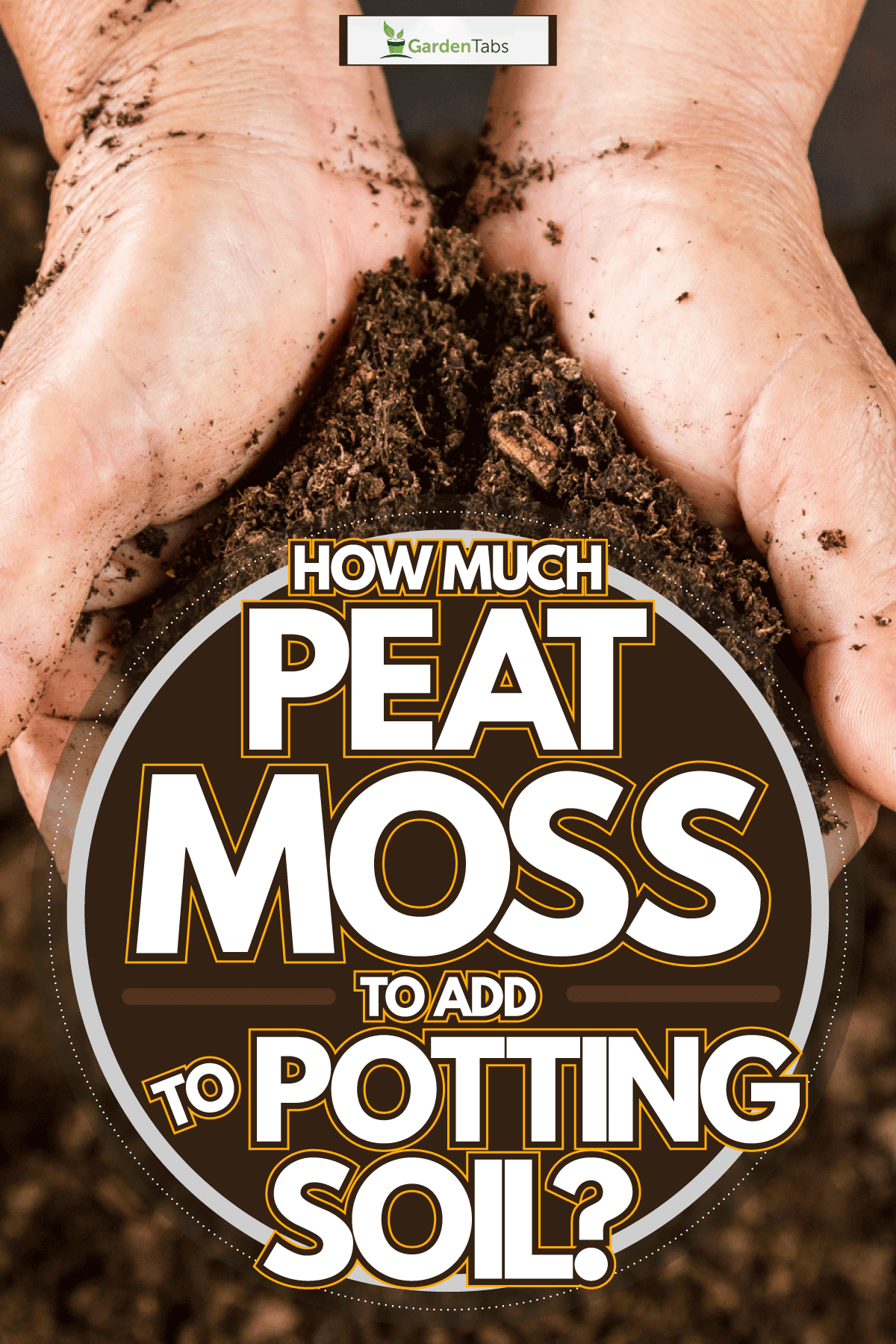
Should I Add Peat Moss To My Potting Soil?
Yes! Adding a bit of peat moss to soil can be very beneficial. Considering how well peat moss retains nutrients for your plants, having it in your mix can do many good things.
The University of Vermont explains how peat moss increases soil's "CEC," or its cation exchange capacity. Furthermore, this material is also lower in pH, meaning you'll need to increase the amount of lime in your potting mix if your plant requires it.
On top of that, using peat moss in a potting mix can serve as a hydroponic growing media, meaning it holds moisture and nutrients that a plant needs to grow.
Although made from decomposed organic material salvaged from peat bogs, Peat moss makes the perfect soil amendment for your plants.
It will increase the number of nutrients and beneficial matter your plant receives, but it also breaks up traditional dirt, allowing for more drainage.
As we mentioned above, you want to add about one part of moss for every part of potting soil you have, so this will be quite a bit depending on the size of your planter.
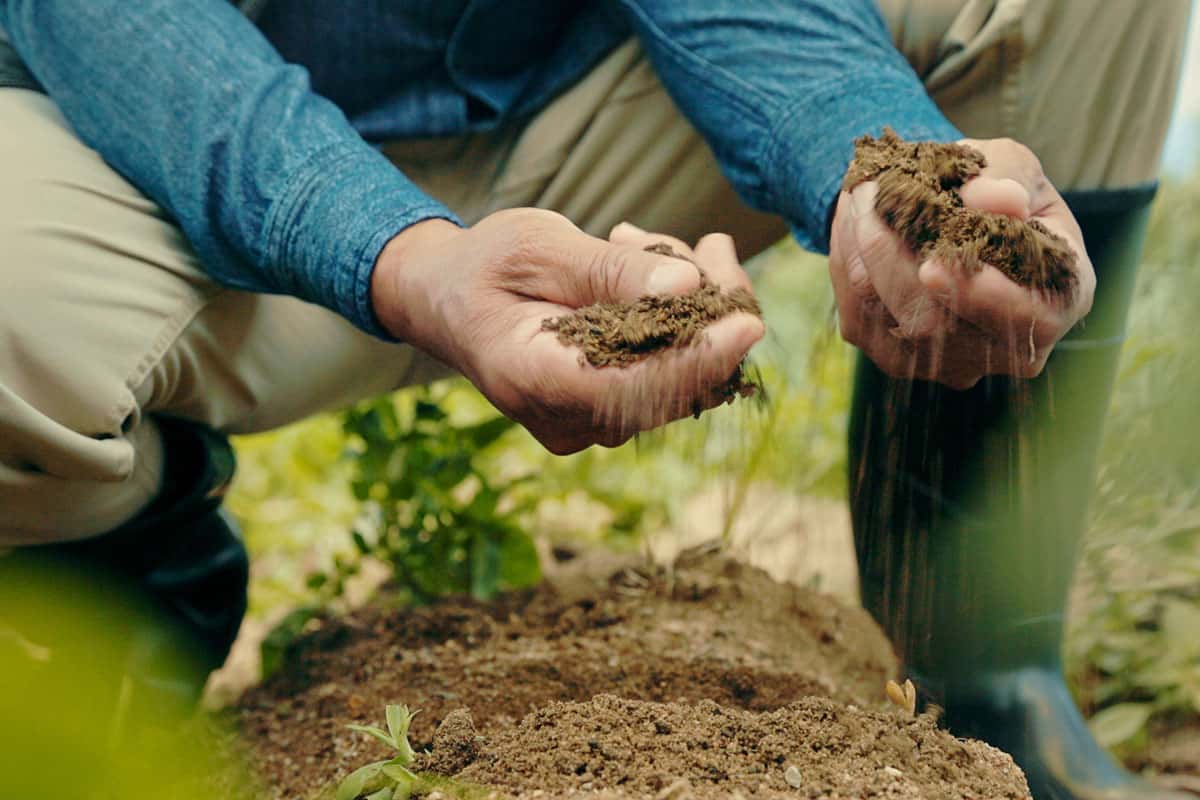
Do You Mix Peat Moss With Soil?
You will need to mix peat moss into your soil before planting anything. Generally, you can do this by hand by mixing or breaking the two up with a shovel.
You can also purchase pre-mixed potting soil with peat moss, which is the easiest option. With that said, if you choose to mix it manually, make sure to do a pH test on your existing dirt.
As we said, peat moss has a low pH level, making your soil unbalanced for certain plant species. It's also crucial to check what type of soil conditions your plant needs to live in.
Failing to do this can result in stunted growth or even death, so the soil can make a difference. For example, many acid-loving plant species love extra peat moss, like blueberries and tomatoes.
However, too low of a pH isn't always a good thing, so if you run into that situation, make sure to amend your soil with a bit of lime.
Kensizer Soil Tester
This soil tester measures pH and moisture, has an easy-to-understand dashboard, has a 7.1-inch probe, and doesn't require batteries.
Follow this link to see it on Amazon.
What Plants Like Peat Moss?
For the most part, fruits and vegetables will enjoy peat moss in their soil. As we mentioned, peat moss has a low pH balance, meaning it is on the more acidic side.
That is perfect for plants like blueberries, Pieris, heathers, azaleas, camellias, tomatoes, and other acid-loving species. However, if your plant prefers more alkaline soil, you may want to use compost instead.
Again, every living organism is different, so not all soils work the same way.
One of the main benefits of including peat moss in a potting mix is that it doesn't have chemicals. It is 100% natural, which is what you should try to prioritize in your garden.
You may want to try mixing peat moss into your dirt manually, although buying a pre-mixed bag is easier and more time-efficient.
All-Purpose Indoor Houseplant Potting Soil
This all-purpose potting soil has 50% peat moss and 50% perlite, works for houseplants, covers a 1/2 gallon, is all-natural, made in Maryland, and only needs water to expand for planting.
Check out this potting mix on Amazon.
What Plants Don't Like Peat Moss?

For those wondering whether their plant will like peat moss or not, you want to check its soil preference. Typically, plants that prefer alkaline or "balanced" soils won't do well with peat moss.
Considering how acidic peat moss can make a given potting mix, you want to add very little if your plant prefers a non-acidic or low acidity environment.
For example, columbine, daylilies, foxglove, goldenrod, lavender, and countless other delicate flowers won't enjoy too much or any peat moss in their soil.
Surprisingly, that goes for many flowering species. Acidic soil tends to burn delicate roots, which can kill them if the damage is severe enough.
So if you read about your plant and it says low to no acidity in the soil, skip the peat moss.
Is Too Much Peat Moss Bad For Plants?
Like any soil amendment, too much peat moss can cause trouble for specific plants. Adding this material to a given potting mix will lower its overall pH, which isn't always beneficial.
As we stated earlier, delicate plants, especially flowers, don't always need acidity. Introducing them to a powerful acidity can result in burnt, stunted, or even dead roots.
However, a little peat moss won't usually do any harm to plants that prefer alkaline level soils, but it's better to be safe than sorry.
You can also try to raise the pH in the soil by adding lime. If you overdo it with the peat moss, add some lime to stabilize the ground around your plant, which should prevent any major damage from happening.
Like pre-mixed peat soils, you can also buy ones with lime in them, so your options are endless.
Does Peat Moss Increase Soil Drainage?
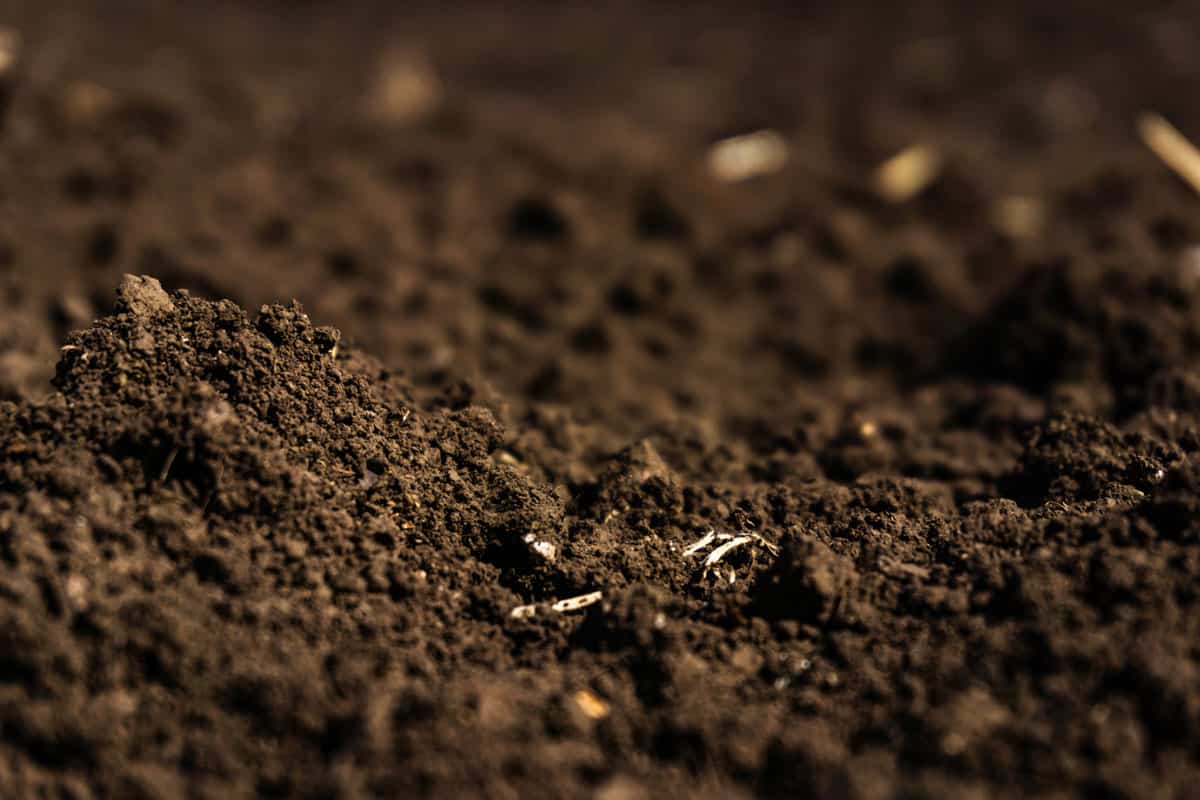
Yes! Adding some peat moss to a thicker soil can help it drain better. The reason for this is that peat moss won't compact over time.
It also increases the soil's ability to move moisture, which can prevent root rot and waterlog. Adversely, you can also use peat moss in sandier soils to help it retain water, so it goes both ways.
One of the reasons this natural material is so popular is that it works in almost any ground condition. Whether you live somewhere with extremely sandy dirt or thick, moist soil, peat moss can be beneficial to a garden.
On top of that, peat moss retains nutrients that may usually be lost before a plant can absorb it. That can make for stronger roots, faster growth, and thicker foliage, all steps to a greener, healthier yard.
So, in general, we do think peat moss is excellent for drainage, among other things.
Will Peat Moss Help My Plants Grow Faster?
Yes, peat moss will likely encourage faster plant growth. As we mentioned, this material holds nutrients within the ground, allowing plants to absorb them.
That can make for a healthier root system, ultimately aiding in a plant's faster height/width growth. Another interesting fact about peat moss is that it slows the decomposition process.
Although this can make for a messier garden, your plant will retain more nutrients than if the ground didn't have any moss present.
This is especially helpful for potted plants. Considering that water tends to drain out of the base of a planter, peat moss can help retain the moisture needed while moving the rest out of the container.
That will help your plant stay healthy and root-rot-free, which will, in turn, make it grow faster/stronger.
What Is The Best Type Of Soil?
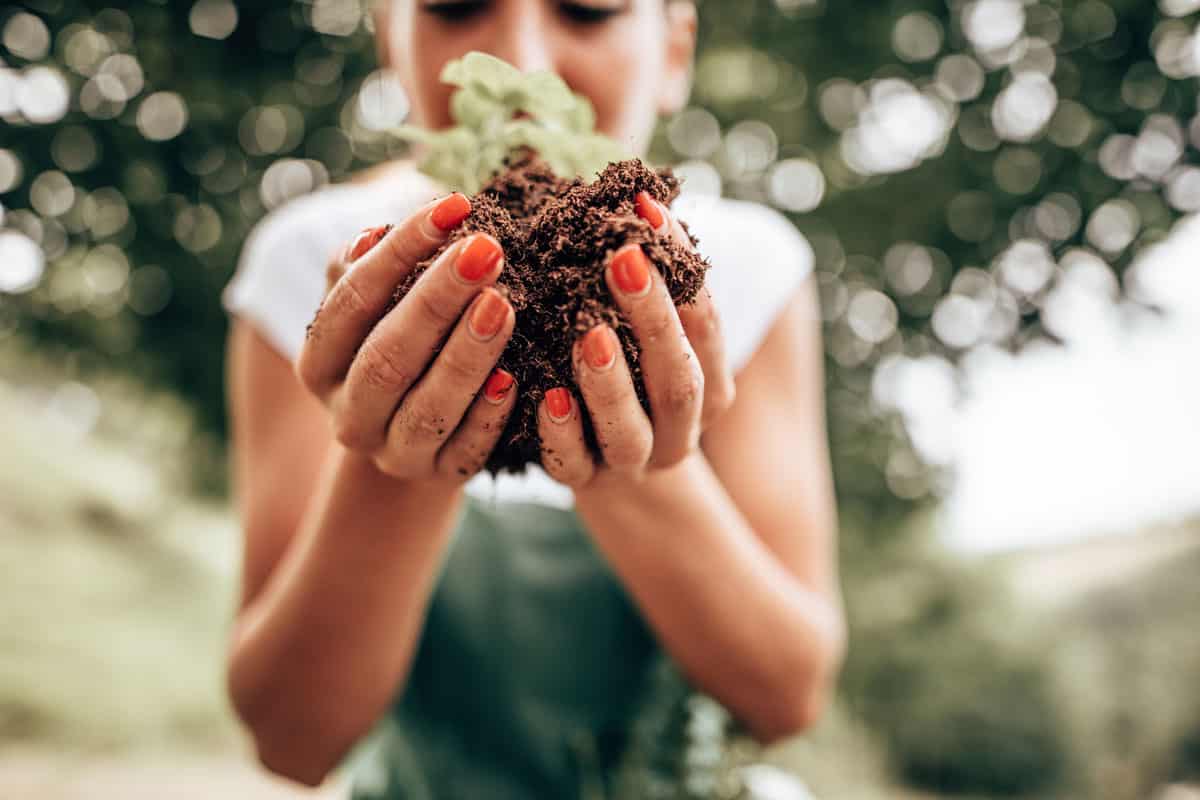
The best blend of soil is often referred to as "loam." Loam is essentially a mixture of sand, clay, and silt. Specifically, a high-quality loam potting soil would have around 40% sand – 40% silt – 20% clay, which will be ideal for growing most plant species.
One of the main reasons loamy soil is so good for growing plants is its good drainage. This soil also contains high levels of nutrients, which will aid in building a strong root system.
Amending soil can make a big difference in its quality, as we covered. For example, if you want to grow something that likes more acidity (a lower pH), you could add peat moss to the mix.
However, if your plant like alkaline soil (a higher pH), mixing more lime into it will be beneficial. Loamy soils work as a middle ground, allowing your plant time to adjust before adjusting the pH levels dramatically.
Also, the sand in loam soil aids in moving water and creating pores throughout a given potting mix. Without enough places for water and air to flow, your plants can become waterlogged or even suffocate underneath the ground.
To Finish Things Up
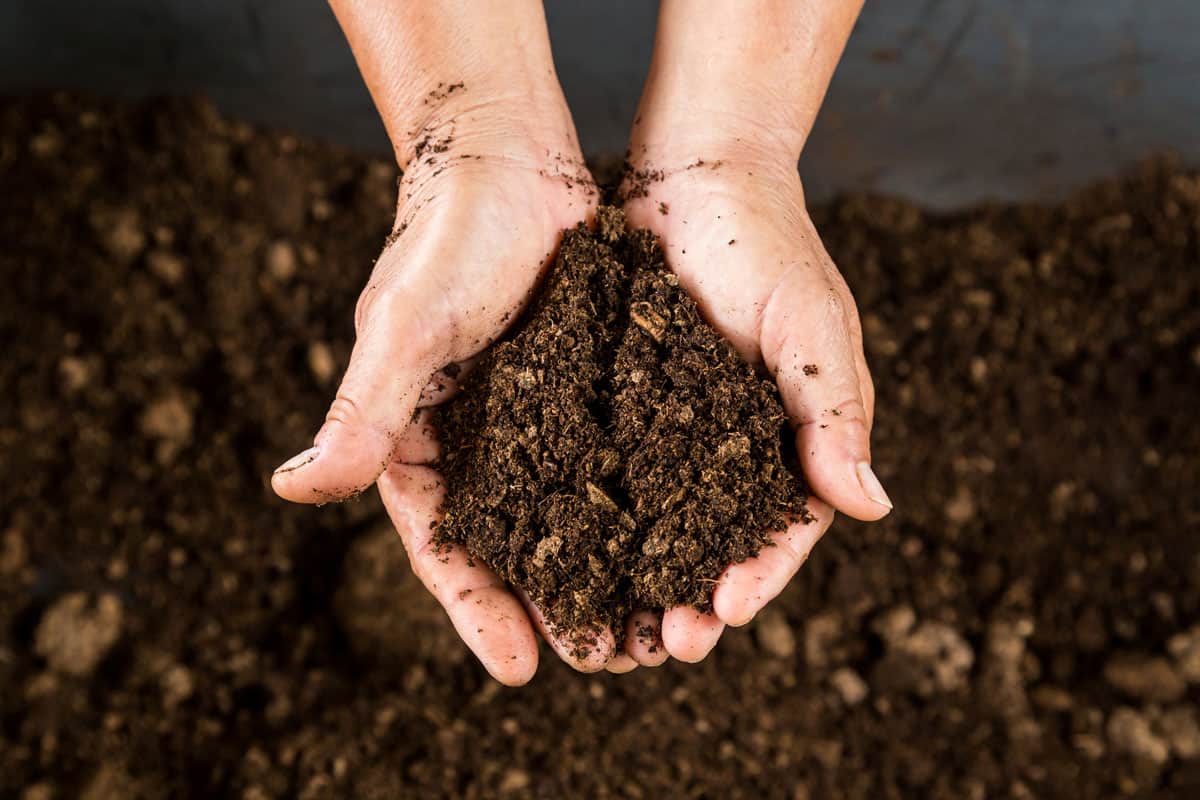
Knowing what goes into a potting mix is essential whether you want to replant a few things or start a garden. You want to add one part of peat moss to every one part of the soil when potting plants.
Typically, adding peat moss to a given soil can increase its nutrient retention and improve drainage. Moreover, peat moss is great for moisture retention in sandier soils, making it great for any environment.
Regardless, do some research into your plant's preferred growing conditions, and don't be afraid to purchase a pre-mixed bag for your gardening.
Made it to the end? Check out these helpful related plant posts below!
How Much Peat Moss To Add To Clay Soil
Should You Be Using Peat-Free Compost? [And Which To Buy]
Hair Cap Moss For Your Garden [Care Tips, Facts, And Pictures]


